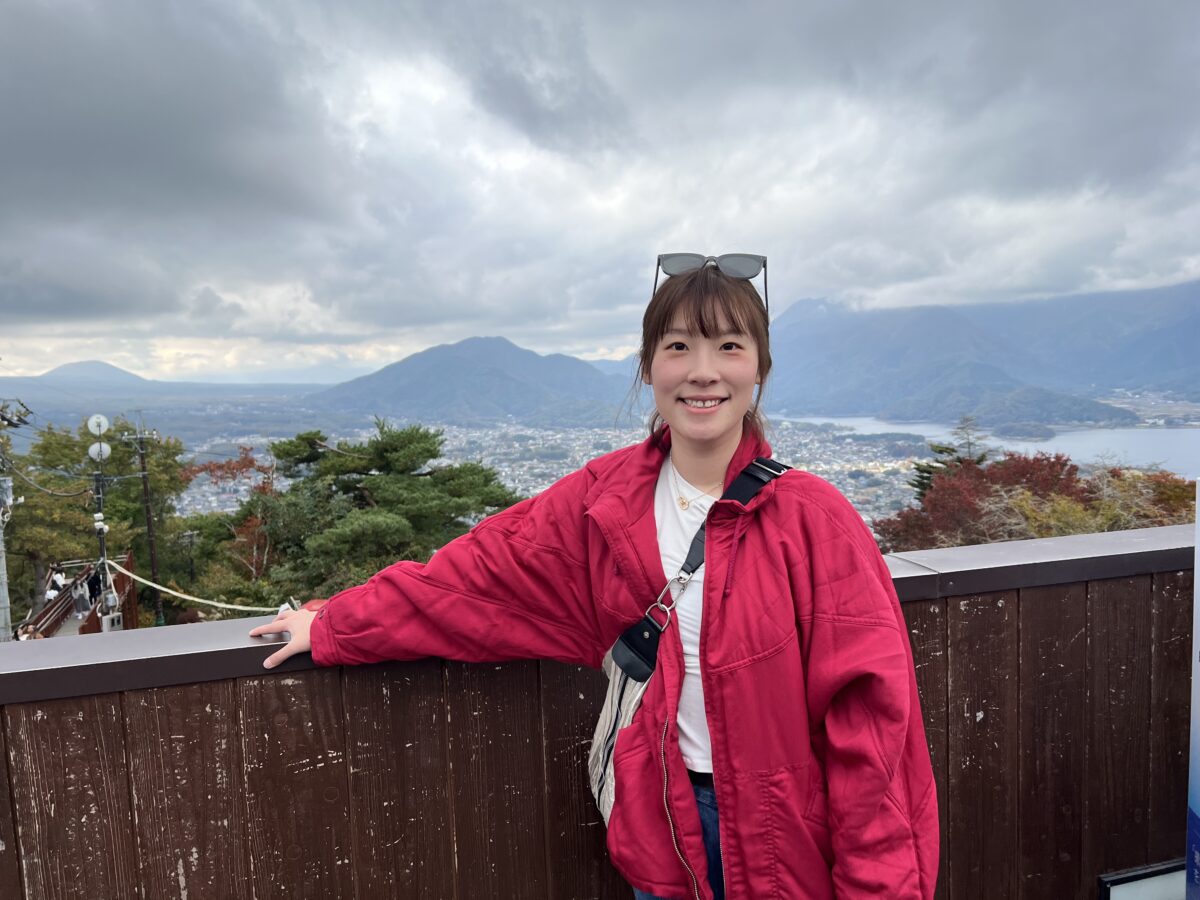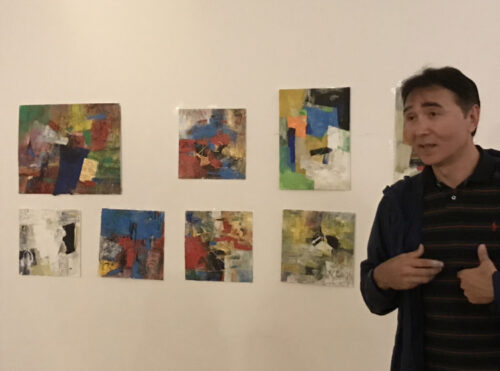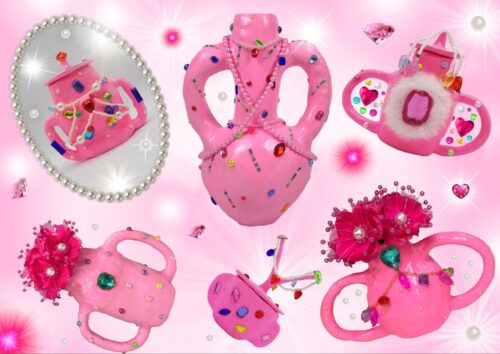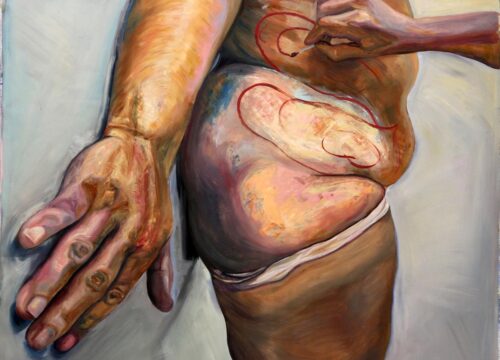Q&A with legendary Taiwanese author and painter Liu Yong on living through the pandemic in Taiwan and his new exhibition
The world-renowned artist and best-selling author tells us about his first solo exhibition in Taiwan in 10 years.
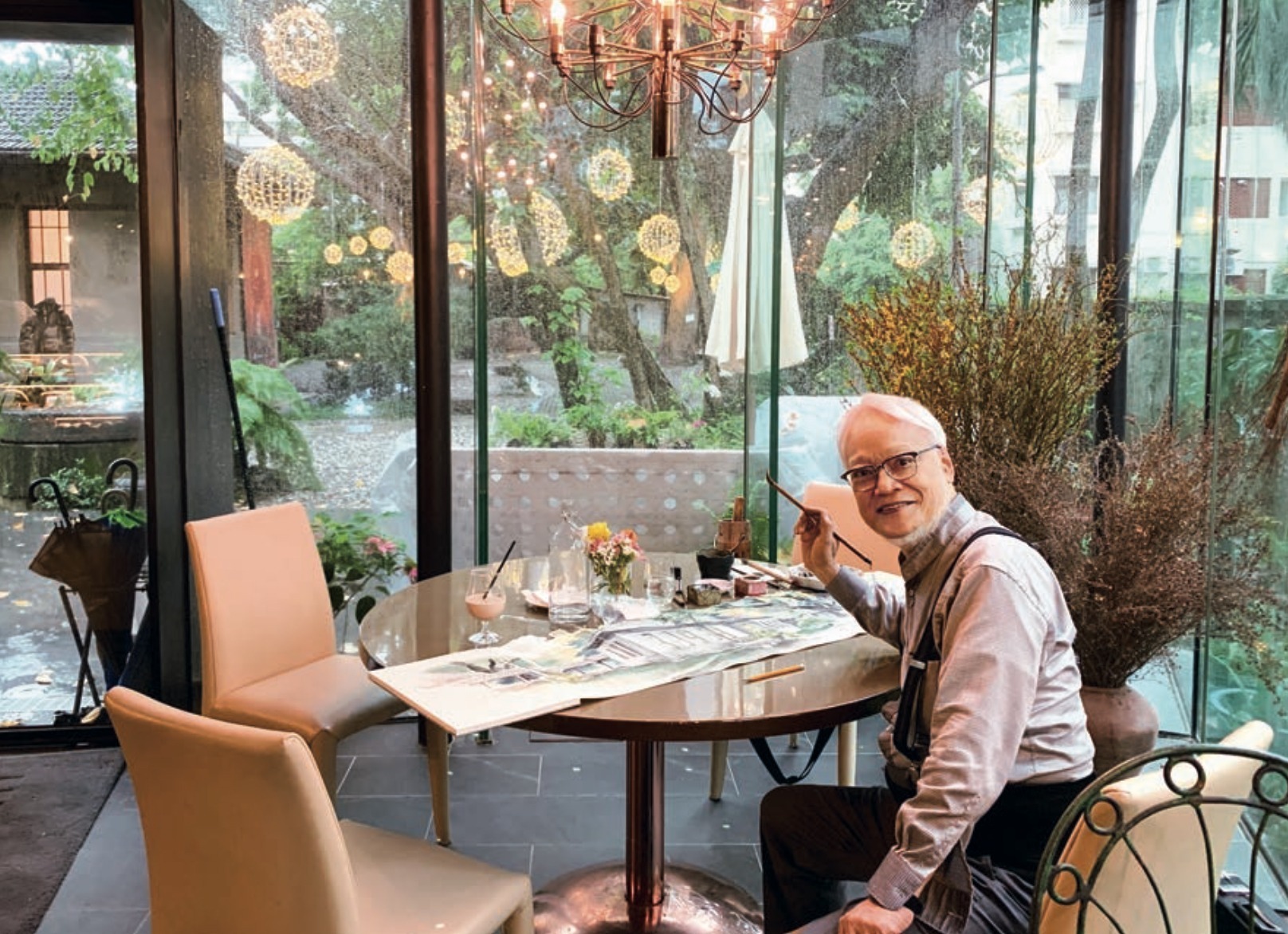
Liú Yōng 刘墉, 73, is a Renaissance man whose work includes art, literature, linguistic performance arts, and drama. He was born in Taiwan and currently divides his time between Taipei and New York. Liu has held more than 30 solo exhibitions around the world as a painter, with his works being regularly sold under the hammer at international auction houses like Sotheby’s and Christie’s, and collected by many art museums.
Liu is one of the few Taiwanese artists who enjoy widespread recognition in China, mainly as the author of more than 100 books ranging from novels to collections, which have been translated into multiple languages and distributed globally. Many of his motivational and parenting books are best sellers in China, where he is also recognized for his philanthropic efforts to build schools for children in impoverished, rural areas.
Liu’s current show is Painting My Childhood in Taipei, his first solo exhibition in Taiwan in 10 years. We spoke with him about his passion for drawing, his prolific writing career, and creating art during the pandemic and in a place entangled in geopolitical tensions.
This interview was originally conducted in Chinese, and has been condensed and edited by The China Project for clarity.
How did you first get interested in painting and writing?
I was into drawing and writing since I was a kid and my whole life has been about these two things. There’s a mutual influence between my two careers and I think it’s the confluence that made my work stand out from my peers.
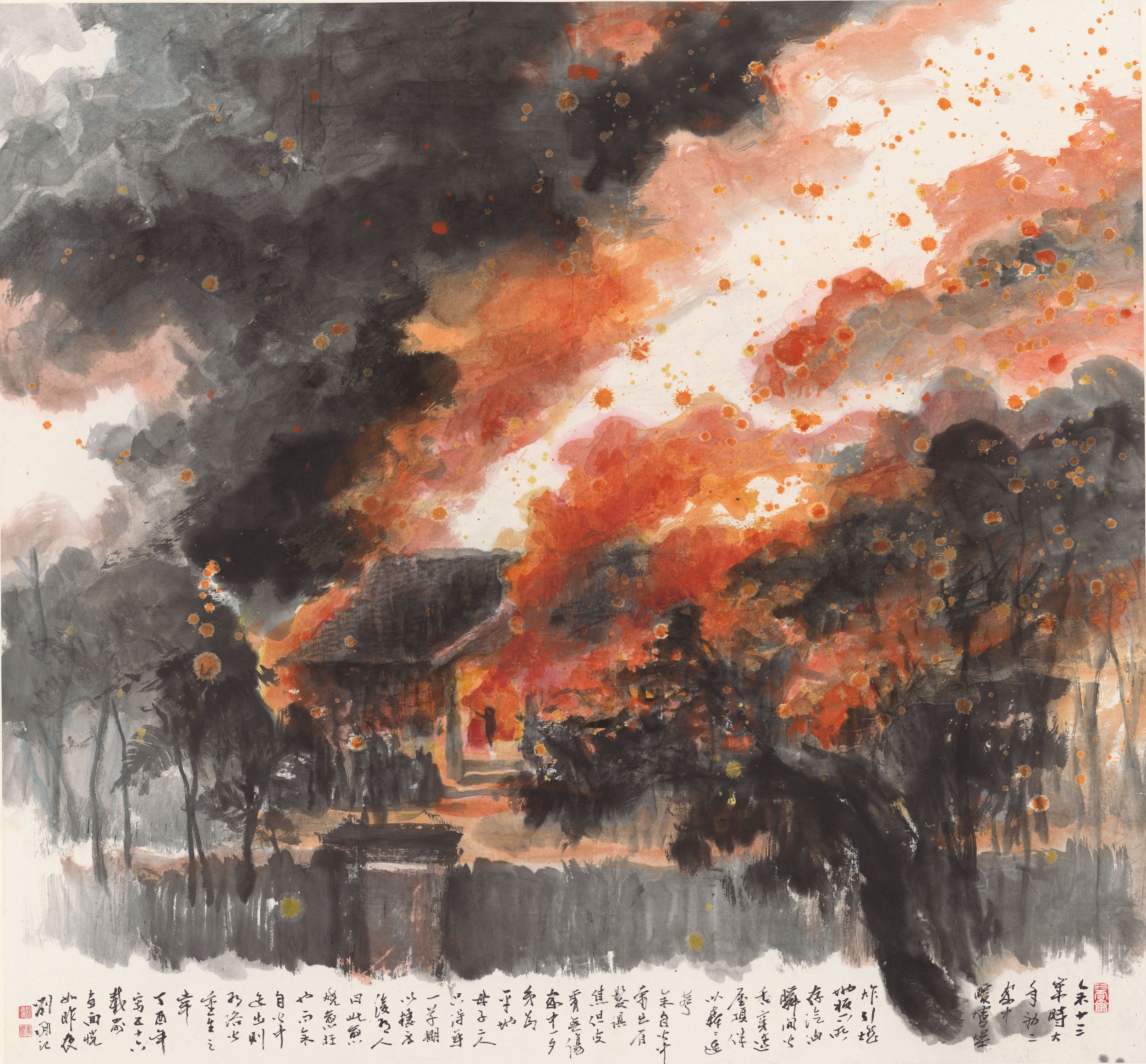
How would you describe your childhood?
Much of my childhood was in the backlight. I also struggled during my teenage years and early adulthood. I was sent away to my adoptive father when I was three. Three years later, my biological father passed away. When I was 13, a fire broke out at home and burned my house into ashes, forcing my mother and I to live in a flimsy shed for months. At 16, I had to drop out of school due to lung disease. Those moments were challenging, but sometimes I still managed to find beauty in them.
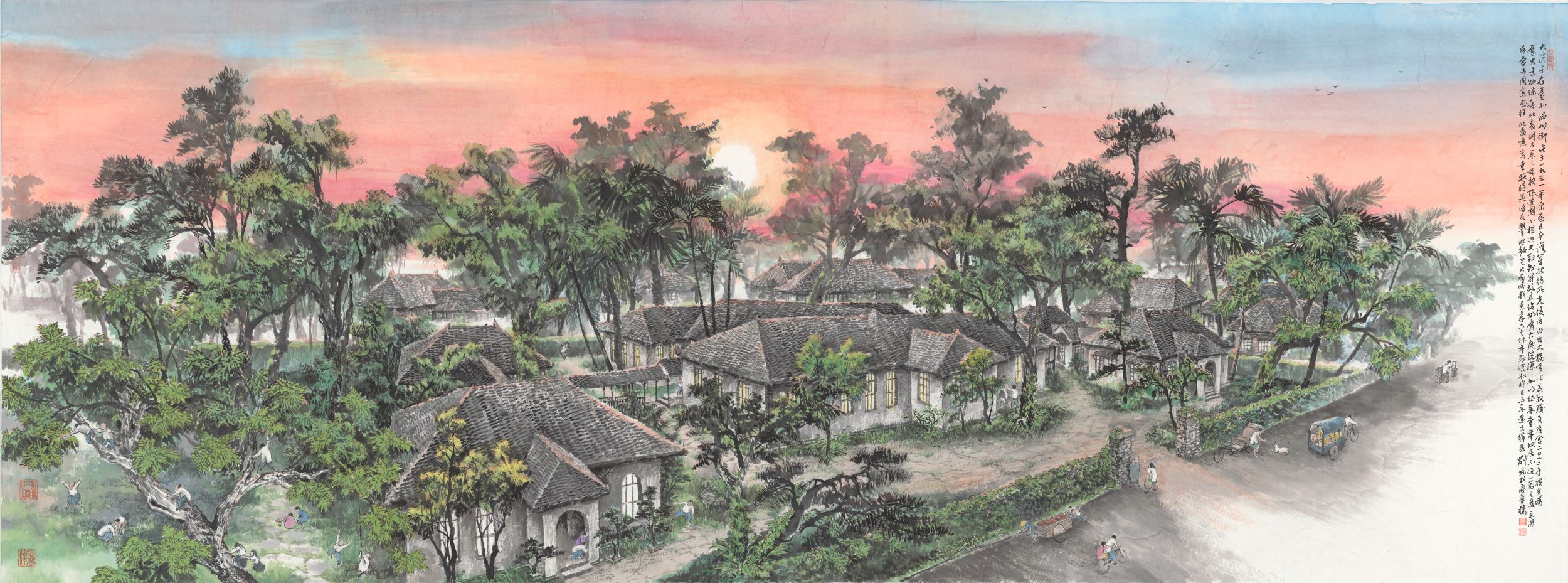
How did this exhibition come about? How long did it take for you to put it together?
It happened very spontaneously. Because of pandemic-related travel restrictions, I was stranded in Taipei for a long time. One day, I saw news on television that the courtyard where I spent a lot of time when I was a child had reopened. It’s long been a place that I wanted to revisit. So I immediately made a trip to the location and discovered that it had been turned into a gallery managed by Liú Wénliáng 刘文良, an old classmate of mine in high school. Liu and his wife invited me to host an exhibition there and I instantly said yes because the courtyard occupies a special place in my heart. I told them that I wanted to create a special show, exclusively showing my memories about the courtyard.
As a result, some of the paintings on display were my works in the past, and others were recent ones created specifically for the exhibition. The show also gave me the opportunity to sketch some flowers that I had never depicted before, such as Lantana camara flowers and beggarticks.

Could you tell me a bit about Peaceful Spring? What inspired you to create this painting and what message do you want to communicate through it?
It was a special request from curator Chén Xiǎojūn 陳筱君, who thought that the world really could benefit from some peaceful time right now.
“Peaceful Spring” has been a recurring theme in my works and it often involves drawing cherry blossom trees, which symbolizes the spring, and pigeons, which stand for peace. Paintings revolving around this theme are especially popular. It’s not an exaggeration to say that every time I put up a “Peaceful Spring” sketch for sale in an exhibition, it’s bought within minutes.
But I’ve only made eight paintings revolving around this theme in my life, including the most recent one. I never felt tempted to make more of those only because they are popular. I have to feel inspired. So before drawing the recent “Peaceful Spring” painting, I went to several cherry blossom locations to feel the fleeting beauty of it.
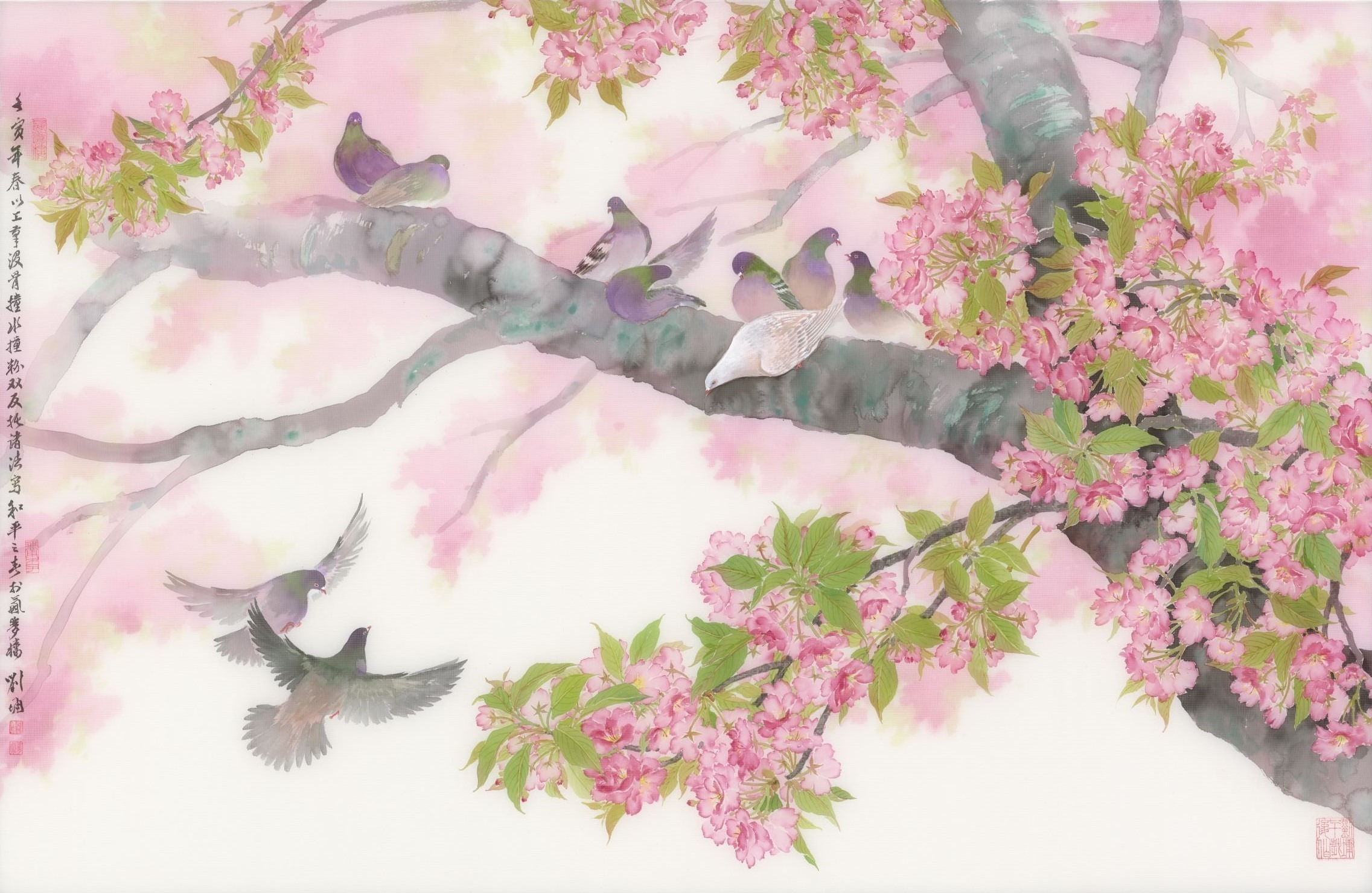
How has the pandemic impacted your creative practice?
The pandemic prohibited us from going outside. But the flip side of it was that we could stay indoors and look inward. When we were homebound, we had the opportunity to deep-clean our houses and organize things and our own feelings. For example, when I stumbled upon an object in a drawer that was forgotten by me for a long time but still held special meaning to me, it made me think about how I got it in the first place and stories about it.
The pandemic allowed me time to confront myself and organize my thoughts. I wrote seven books and worked on this exhibition during this period of time. Without the pandemic, I wouldn’t have gotten these things done.
You had lived abroad for many years before the pandemic, which forced you to stay in Taiwan in the past few years. Is there any notable difference between what you have seen and heard in Taiwan in recent years and the Taiwan you remembered in the past?
The current geopolitical situation is making a lot of people pay attention to Taiwan and see it through a special lens. In the past, few people outside the island actually wanted to learn about it and follow what it was up to. But now, Taiwan is making significant strides on many technological fronts, especially in chipmaking. This has made Taiwan a highly coveted partner in the global sphere but at the same time, people are worried about tension between Taiwan and mainland China.
But if you ever visit Taiwan, you would notice that people here are actually calm about everything that’s going on. Perhaps it’s because people in Taiwan have been through so much that there isn’t much left that can scare them. The world needs peace right now and everyone needs to try to keep their composure when changes happen. It’s like we are all on this boat that’s sailing through rough, violent waves in the ocean. All we can do is stay humble and calm. Taiwan is obviously like a boat caught in a hurricane right now, but most people here have a peaceful state of mind.

How do your writing and drawing influence each other? Do you have any unfinished projects or things you want to accomplish next?
Next year will mark the 50th anniversary of me writing books professionally. I’ve published a total of 117 books. Some of them are best-selling books both in Taiwan and in mainland China, others that deal with very specific objects don’t sell very well. But I have this principle that I don’t let external factors interfere with my creative practices. I draw whatever I want to draw and I write whatever I want to write. Probably because I wear multiple hats, I never get bored and my artistic well never dries. I tried to retire some of my interests before, but that made me feel beside myself. Some people call me a Renaissance man and they might be onto something.
I’ve been searching for inspiration and stayed curious my whole life. I believe in this saying that goes, “To see a world in a grain of sand and a heaven in a wild flower.” You can find beauty and things to contemplate everywhere. Although my health situation isn’t excellent, I still try to make the most out of every single day. I keep telling myself that if I have to leave this world tomorrow, I need to make sure I’ve had a fulfilling life.
Special thanks to Yvonne Liu, Liu Yong’s daughter and the cofounder of SYZ Studios, for facilitating and helping with the interview. Painting My Childhood continues through November 30, 2022, at the Grand Courtyard in Taipei. Click here for more information.
